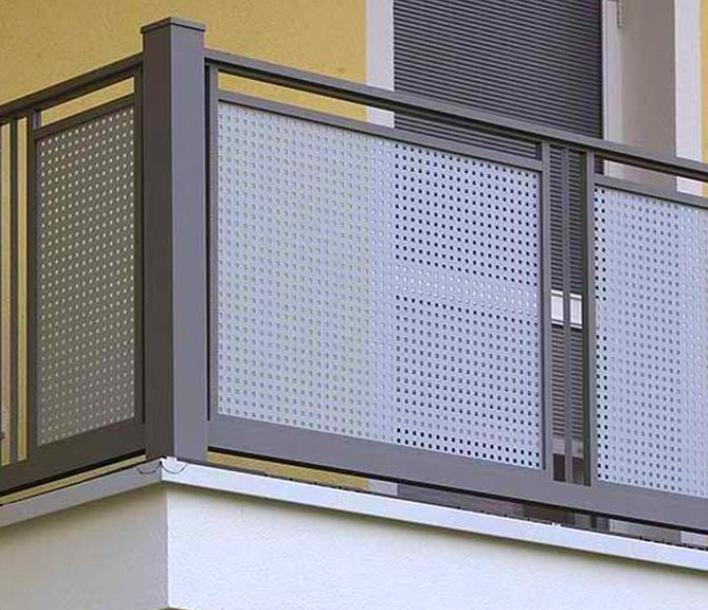Balcony railings serve as a crucial safety feature, preventing falls and ensuring the security of individuals using the balcony. They also enhance the aesthetic appeal of the structure, complementing the overall design of the building. Balcony railings come in various materials, styles, and designs, allowing for customization to suit specific preferences and architectural requirements.
Balcony Railing Exterior
Types of Balcony Railing Exterior
Balcony Railing Exterior, the choice of balcony railing material depends on factors such as durability, weather resistance, ease of maintenance, and aesthetic preferences. Popular materials include:
- Wood: Wood railings exude a classic and natural charm. They are available in various types of wood, including cedar, redwood, and mahogany, each offering unique characteristics in terms of color, grain pattern, and durability. Regular maintenance, such as staining or painting, is essential to protect the wood from decay and weathering.
- Metal: Metal railings, typically made from aluminum, iron, or steel, offer exceptional durability and strength. They are resistant to rust and corrosion, making them suitable for harsh weather conditions. Metal railings can be powder-coated or painted in a wide range of colors to match the building’s exterior.
- Glass: Glass railings provide a sleek and modern look, creating a sense of transparency and openness. They are made from tempered or laminated glass, ensuring safety and durability. Glass railings require regular cleaning to maintain their pristine appearance.
- Composite: Composite railings are made from a combination of materials, typically wood fibers and plastic polymers. They offer the strength and durability of metal with the aesthetic appeal of wood. Composite railings are low-maintenance and resistant to rot and decay, making them an ideal choice for demanding environments.

Styles and Designs
Balcony railings come in a myriad of styles and designs, allowing for customization and harmonization with the architectural style of the building. Some popular styles include:
- Traditional: Traditional railings feature simple, clean lines and classic designs. They often incorporate intricate details and ornamentation, adding a touch of elegance and sophistication to the balcony.
- Contemporary: Contemporary railings embody sleek, minimalistic lines and geometric shapes. They often feature clean, straight lines and use materials like glass and metal to create a modern and sophisticated look.
- Rustic: Rustic railings embrace natural elements and materials like wood and stone. They often feature rough-hewn textures and simple designs, creating a warm and inviting atmosphere.
- Ornamental: Ornamental railings are characterized by intricate designs and elaborate embellishments. They often incorporate decorative elements like scrolls, flowers, and leaves, adding a touch of elegance and charm to the balcony.
Usage and Application
Balcony railings serve various purposes and find application in a range of settings:
- Residential Buildings: Balcony railings are commonly used in residential buildings, including apartments, condos, and townhouses. They provide safety and security for individuals using the balcony, preventing falls and ensuring peace of mind.
- Commercial Buildings: Balcony railings are also essential in commercial buildings, such as offices, hotels, and restaurants. They create a safe and secure environment for employees, guests, and customers while enhancing the overall aesthetics of the building.
- Public Spaces: Balcony railings are found in public spaces like parks, plazas, and walkways. They provide safety and security for individuals using these spaces while contributing to the overall visual appeal of the area.
Features and Benefits
Balcony railings offer several key features and benefits:
- Safety: Balcony railings are primarily designed to ensure the safety of individuals using the balcony. They prevent falls and provide a secure barrier, reducing the risk of accidents.
- Security: Balcony railings act as a deterrent against unauthorized access to the building, providing additional security. They prevent intruders from climbing onto the balcony and gaining entry to the premises.
- Privacy: Balcony railings can provide a sense of privacy for individuals using the balcony, shielding them from the view of passersby or neighboring buildings.
- Aesthetics: Balcony railings contribute to the overall aesthetic appeal of the building, enhancing its architectural style and creating a cohesive and visually pleasing design.
Balcony railing exterior plays a crucial role in enhancing the safety, security, and aesthetic appeal of buildings. With various materials, styles, and designs available, balcony railings can be customized to suit specific preferences and architectural requirements. Whether in residential, commercial, or public spaces, balcony railings provide essential functionality while contributing to the overall visual appeal of the structure.

Bir yanıt yazın